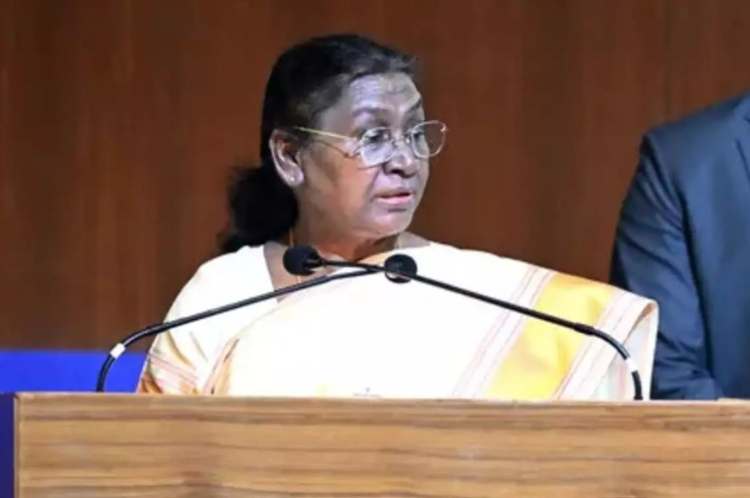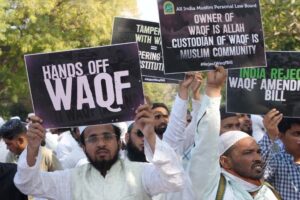
The Waqf (Amendment) Act, 2025, which has now received President’s assent, drastically revamps the legal structure of Muslim religious endowments in India, indicating a decisive move by the state into the domain of minority religious affairs. Renamed as the UMEED Act (Unified Waqf Management, Empowerment, Efficiency and Development), this legislation has come in a political context shaped by the BJP-led government’s broader ideological and electoral project. Much like the criminalisation of triple talaq and the ongoing debates around the Uniform Civil Code, this move is widely viewed as part of a larger campaign to redefine minority laws under the rubric of reform.
While the government claims the UMEED Act will enhance transparency, efficiency, and inclusiveness, critics argue that it may undermine religious autonomy and constitutional safeguards of the Muslim community. As this legislation is going to alter the way waqf is understood and administered, it is important to assess its provisions, departures from earlier laws, and the anxieties it has sparked off.
READ I Data, chips and sovereignty: Towards a new world order
From colonial codification to contemporary reform
The concept of waqf—a permanent religious endowment in Islamic law—has long been part of India’s legal and socio-religious landscape. Under British colonial rule, the Mussalman Wakf Validating Acts of 1913 and 1930 provided statutory recognition to waqf, culminating in the Mussalman Wakf Act, 1923. Post-independence, the Waqf Act, 1954 and its comprehensive revision in 1995 aimed to centralise waqf governance under state and central boards.
Amendments in 2013 were introduced to curb mismanagement and enhance accountability. However, longstanding issues such as incomplete surveys, unauthorised occupations, and administrative opacity continued to plague the system. The 2025 amendments claim to address these challenges but do so by substantially redefining the legal and institutional terrain.
Waqf disputes and legal battles
Waqf property claims have triggered widespread legal disputes and community concerns across several Indian states. As of September 2024, Waqf Boards in 25 States and Union Territories had declared 5,973 government properties as waqf. These claims have often led to unexpected consequences for affected individuals and communities. In Tamil Nadu, a farmer in Thiruchenthurai village was unable to sell his land due to the Waqf Board’s sweeping claim over the entire village, which disrupted his efforts to repay a loan for his daughter’s wedding. In Bihar, the Sunni Waqf Board’s claim over Govindpur village affected seven families, prompting a legal case currently pending in the Patna High Court.

In Kerala, around 600 Christian families in Munambam (Ernakulam district) are contesting the Waqf Board’s claim over their ancestral land and have appealed to the Joint Parliamentary Committee. Karnataka witnessed mass protests in 2024 when the Waqf Board declared 15,000 acres in Vijayapura as waqf land, with additional disputes surfacing in Ballari, Chitradurga, Yadgir, and Dharwad. In Uttar Pradesh, allegations of corruption and mismanagement against the State Waqf Board have further intensified public discontent.
Additional submissions to the Joint Parliamentary Committee highlighted past and ongoing claims that have raised alarms. In Karnataka, waqf property notifications in 1975 and 2020 covered a wide range of public and private lands, including farmlands, graveyards, lakes, and even temples. In Punjab, the Waqf Board reportedly laid claim to land managed by the Education Department in Patiala. During a September 2024 presentation to the Committee, the Ministry of Housing and Urban Affairs revealed that 108 properties under the Land and Development Office, 130 under the Delhi Development Authority, and 123 other public properties had been declared as waqf and subsequently became subjects of litigation. These developments reflect growing tensions between Waqf Boards and a range of stakeholders, including government bodies, religious minorities, and private landholders, highlighting the urgent need for clearer legal standards and administrative checks in waqf property governance.
Governance: Inclusivity or institutional dilution
One of the most controversial aspects of the UMEED Act is the reconstitution of the Central Waqf Council and State Waqf Boards. Previously, only Muslims (barring the Union Minister) could be members; the new law mandates at least two non-Muslim members and allows for a possible non-Muslim majority. Moreover, appointments are now fully nominated by state governments, replacing the earlier election-based process involving Muslim MPs, MLAs, and Bar Council members. While this is framed as enhancing diversity and oversight, critics view it as an infringement on Article 26 of the Constitution, which guarantees religious denominations the right to manage their own affairs.
The eligibility criteria for mutawallis (waqf managers) have also been tightened. Section 50A disqualifies those under 21, persons of unsound mind, undischarged insolvents, those convicted of crimes over two years, and anyone found guilty of encroachment on waqf land. While aimed at improving management, this could be used to remove inconvenient office-bearers.
UMEED Act: Legal clarity or restrictive overreach
The UMEED Act introduces new definitions, including “Aghakhani waqf” and “Bohra waqf,” and stipulates that only Muslims who have practised Islam for five years and are lawful property owners can create a waqf. This effectively reverses the 2013 provision that permitted non-Muslims to make waqf-like endowments. Verbal waqf declarations are now invalid, and all waqfs must be backed by a deed and registered through a digital portal.
Importantly, the law clarifies that waqf-alal-aulad (family waqf) cannot be used to deny legal heirs, particularly women, their rights. A clause has been added that this rule applies only if the waqif so intends, reflecting an attempt to balance reform with religious intent. However, the abolition of ‘waqf by user’, the recognition of religious use over time, remains a deeply contested move. While existing waqfs by user are protected unless disputed or marked as government land, the ambiguity of this clause opens the door to retrospective dispossession.
Digital compliance and property reclassification
The UMEED Act mandates that all waqfs, including those predating the Act, must be uploaded onto a central portal within six months (extendable by the Tribunal or court). Unregistered waqfs beyond this window lose their legal standing. While this seeks to bring transparency, it also risks excluding historically undocumented waqfs, especially in rural or conflict zones.
Perhaps the most far-reaching provision in the Act states that any property recorded as government land in revenue records “shall not be treated as waqf property” and will vest in the government “free from all encumbrances, trust, waqf, tenancy or any other claim.” This is feared to have retrospective implications: even past court orders or waqf board recognitions can be nullified if revenue records say otherwise. This clause, critics argue, effectively turns historical documentation errors or administrative lapses into legal instruments for dispossession. Moreover, waqf claims over protected monuments or tribal lands are rendered void under Section 3D, further limiting the scope of waqf recognition.
Legal oversight and dispute resolution
Tribunals have been retained with a three-member composition – a district judge, a senior bureaucrat, and an expert in Muslim law – after widespread criticism of earlier proposals to remove religious legal expertise. The finality clause has been dropped, allowing appeals to High Courts within 90 days. This restores a level of judicial oversight that had been missing.
However, the power to decide whether a property is waqf or government land now lies with an officer above Collector rank, whose findings must be accepted by the state. During the inquiry, the property is not to be treated as waqf. This could create delays and obstruct legitimate waqf functions, especially if such inquiries become tools of political interference.
Concerns, anxieties, and legal implications
The UMEED Act has caused significant concern among Muslim organisations, legal scholars, and civil society groups. The centralisation of authority, inclusion of non-Muslims in waqf bodies, and the fear of retrospective nullification of waqf claims have been described as a dilution of religious autonomy. The reference to ‘trust’ in the Act is especially troubling, as it brings waqf under the same treatment as secular charities, undermining its Islamic distinctiveness.
A Public Interest Litigation (PIL) is already pending in court challenging the constitutional validity of the Waqf Act itself on grounds of unequal treatment, and the new amendments are likely to be added to this legal challenge. The law’s implementation could see a wave of litigation, especially from mutawallis and communities seeking to defend historically waqf-occupied land.
The UMEED Act, 2025 presents itself as a step toward modernisation and good governance. Yet, its incrusted provisions suggest a deeper redefinition of waqf—from a protected religious institution to a tightly monitored administrative category. In doing so, it opens important questions about minority rights, the role of the state in religious affairs, and the future of community-owned endowments. As with earlier interventions like the triple talaq law and the UCC debate, the waqf amendments indicate not just legislative reform but a repositioning of power between state and minority institutions. The outcome of this experiment will spread out not just in courtrooms, but also in the social and political life of Muslims in the years to come.
Dr KM Seethi is Director, Inter University Centre for Social Science Research and Extension (IUCSSRE), Mahatma Gandhi University (MGU), Kerala, India. Seethi also served as Senior Professor of International Relations, Dean of Social Sciences at MGU and ICSSR Senior Fellow.

